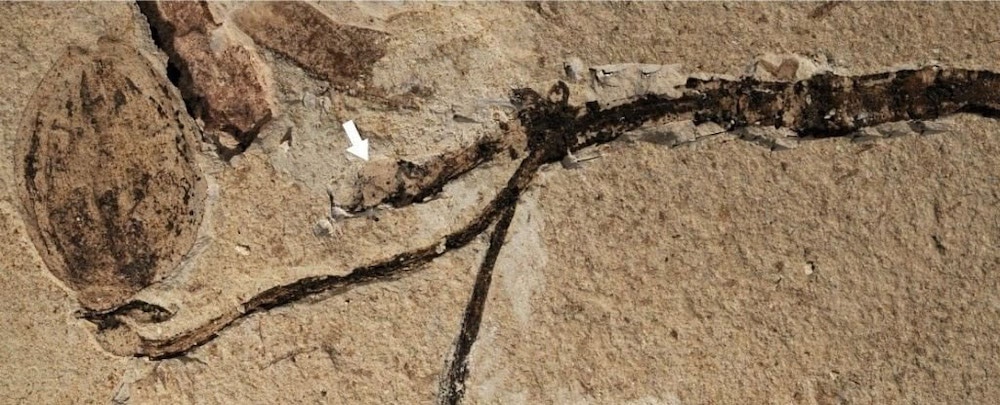Create a free profile to get unlimited access to exclusive videos, sweepstakes, and more!
Wilted for millions of years, the oldest prehistoric flower bud could solve 'abominable mystery'
Did flowering plants just bloom out of the ether and take over?

Flowers may wilt after a couple of days, but how about one that has been frozen in time for 167 million years?
Fossil flowers are particularly rare because their delicate structures rarely fossilized well without being destroyed. However, when Florigerminis jurassica was unearthed, it was not just a newly discovered species but the potential answer to a mystery. Angiosperms (flowering plants) evolved mysteriously fast. How could they have gone from blooming out of the ether to taking over ecosystems only 20-30 million years later?
This kept even Darwin up at night. What came to be called his “abominable mystery” wasn’t even really about flowering plants; they were just the subject of his frustration over how any organism could appear so abruptly and then diversify like that. Researcher Xin Wang of the Chinese Academy of Sciences, who coauthored a study recently published in Geological Society of London Special Publications, has an idea.
“Angiosperms or their relatives have been on Earth a long time,” Wang told SYFY WIRE. “They struggled to survive and sustain themselves until the Cretaceous, when they somehow found niches with the right ecological factors for their offspring to widely disperse and diversify.”
The thought of this was apparently too much for Darwin. He tried to argue his way out of it, coming up with theories that sounded more like fairy tales about pre-Cretaceous flowering plants that evolved gradually on some lost continent. He also tried to explain the mystery away by saying that a mid-Cretaceous superbloom may have been brought on by the relationships between angiosperms and pollinating insects as they co-evolved. He was haunted by the thought that evolution could happen faster than he predicted.
What especially scared Darwin about rapid evolution was the thought that it could be saltational, meaning huge mutations could occur from one generation of organisms to the next, instantly creating a new species. The few existing fossilized angiosperms or proto-angiosperms have done little to explain this. How exactly flowering plants were able to evolve and diversity so quickly is still unknown, but that they somehow pulled it off is just about unquestionable. This is where Florigerminis jurassica comes in.
“The theory of no angiosperms having evolved until the Cretaceous is untrue, but almost all the theories of angiosperm evolution are based on such an assumption, which has misled scientists,” Wang said. “Darwin's ‘abominable mystery’ is a misunderstanding.”
F. jurassica is now the oldest known flower bud and could be proof of a transitional state between proto-angiosperms and actual angiosperms. It stands out as an angiosperm instead of a gymnosperm, which does not have an ovary or fruit to protect its seeds. Both a bud (top right) and a fruiting part (top left) of F. jurassica were preserved. The long pedicel (the leftovers of the flower it came from) of the fruit is something you almost never see in gymnosperms with the exception of gingko. The slight cavity at the top of the fruit also doesn’t exist in gymnosperms.
Though we still don’t know how angiosperms managed to thrive so well and evolve faster than anything Darwin could have dreamed of, they must have been amazing at offspring developmental conditioning (ODC) during the Jurassic and Cretaceous. This is a relatively new concept that applies to all organisms that reproduce sexually. It tries to figure out how organisms evolve by recognizing a trend — that all higher organisms have an influence on how their offspring develop. Evolution maintains a lineage this way.
“Misinformation at least partially contributes to the so-called ‘abominable mystery,” said Wang. “This is simply because the theories are far away from the reality.



























